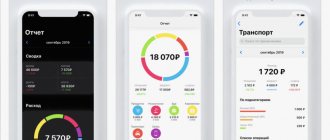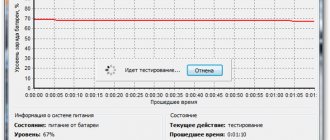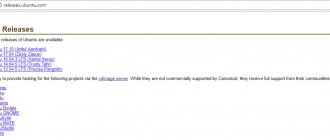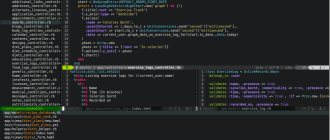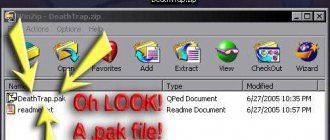Birdie Twitter App
Until recently, we did not have a more or less decent client for Twitter, at least comparable to existing programs for other platforms. That all changed with the arrival of Birdie in March of this year. Today he has turned from a chick falling at every step into a completely mature and beautiful bird.
Birdie
conclusions
In this article, we looked at the best programs for Ubuntu. This is just my opinion, and it does not claim to be the ultimate truth. And the list can be continued endlessly, because new programs are constantly appearing, and the functionality of existing ones is growing every year. What programs would you consider to be the best for Ubuntu? Which ones do you use?
Related posts:
- Review of Ubuntu Phone OS for smartphones
February 7, 2016
- TOP questions about Linux “What’s the difference”
March 27, 2016
- Smartphones with Ubuntu
May 27, 2016
- Where to look for programs for Ubuntu
July 14, 2016
Unity Tweak Tool
Don't like Unity? You just don't know how to cook it! A special utility for setting up this working environment contains so many different options that you can definitely customize Unity for yourself. Themes, button layout, scroll bars, fonts, hot zones, taskbar and other elements of the operating system are now under your control.
Unity Tweak Tool
Desktop environments
GNOME
GNOME is a GTK-based desktop environment that offers a completely unique experience with the GNOME Shell, which features an Activities view and a greater emphasis on using virtual desktops. Even if you don't use pure GNOME, there are several desktop environments that use parts of GNOME in their installations, while others are based on GNOME code but have gone their own way. This desktop environment is generally considered to be a moderate user of system resources, although compared to Windows or Mac OS it is quite lightweight.
KDE
KDE is a Qt-based desktop environment designed to provide as many features as possible. It is often regarded as the most luxurious desktop environment, as well as the heaviest user of system resources. KDE 4 will soon begin to be phased out by KDE 5, which is more of a rewrite of KDE than a major redesign. You will be able to find KDE 5 in some distributions within the next 6 months to one year.
Xfce
Xfce is another GTK-based desktop environment, but it has always been a standalone environment rather than having any ties to GNOME (which is also written in GTK). It consumes less system resources and is great for systems with lower specifications, and could easily compete with its heavier brothers.
The best Minecraft analogues for cube graphics lovers
LXDE
LXDE is undoubtedly the lightest traditional desktop environment available. LXDE uses surprisingly little RAM, so it's a good choice for those with less powerful devices or those who simply prefer to save every ounce of power. We don't think it's the prettiest desktop environment (although tweaks can make it look decent), but it's functional enough.
Cinnamon
Cinnamon is a Linux Mint's replacement for GNOME Shell. While this environment uses some GNOME applications (and copies the rest, i.e. Nautilus becomes Nemo), the user experience is completely different. While keeping modern technologies and frameworks, it tries to preserve a more traditional way of working with the desktop instead of adopting the unique way of managing GNOME Shell windows. Since Cinnamon is evolving towards Linux Mint, it is not so easy to get Linux Mint on other distributions.
MATE
MATE is another Linux Mint project that aims to replicate the old GNOME 2 and support it, unlike GNOME which stopped supporting GNOME 2 after GNOME 3 came out. In fact, MATE's code was originally taken from GNOME 2 after it became unsupported and has since been used by Linux Mint developers. As stated, they are committed to keeping the desktop look the same, but there are plans that they want to port the desktop environment to a GTK3 base to keep up with the latest technology.
Unity
Unity is a child of Canonical, the company behind Ubuntu. Unity was developed by Canonical when GNOME announced plans for GNOME Shell and Canonical didn't want to take Ubuntu in that direction. Despite the fact that many Linux users have complained about Unity, it is still quite easy to use, customizable, and most importantly, familiar. People use Ubuntu more than any other Linux distribution, so Unity is perhaps the most familiar desktop environment of them all.
Intel Graphics Driver Installer
Until recently, installing drivers on Linux was not a task for the faint of heart. But gradually manufacturers are simplifying this process more and more, and Intel is setting an example in this, whose drivers can be installed literally in one, two, three times. The utility they released automatically detects the hardware, downloads the necessary drivers and installs them into the system, after which it also monitors their timely updating.
Intel Graphics Driver Installer
Office packages
Applications for Ubuntu are also suitable for office activities. There are several office suites that are more or less similar to MS Office in functionality: KOffice, GNOME Office, OpenOffice and, of course, LibreOffice. The latter is the leader among them, although it began as a reworking of OpenOffice.
By default, in Ubuntu it comes in a stripped-down form - a text editor LO Writer and Calc spreadsheets. To install the necessary LibreOffice components, you need to download programs for Ubuntu from the Software Center application.
LibreOffice provides almost all the same capabilities as MS Office: create, check and print a complex document, process data in spreadsheets, draw a presentation. Compatibility of file formats with MS Office makes this package a worthy alternative solution for office work.
If we approach the comparison of office packages impartially, then there are two full-fledged solutions among Ubuntu programs - OpenOffice and LibreOffice. At the same time, only LibreOffice is actively developing and is often released with new versions. Therefore, in this segment there is not much choice - an office suite is a very complex set of programs, the development of which can only be done by a large organization.
VLC
One of the most popular multimedia players this year has further strengthened its position in the Linux world. Now its functionality is practically no different from versions for other platforms, including added support for hardware decoding, several new formats, and improved integration with Ubuntu system interfaces.
VLC
Video and audio
You can write a separate review about video software for Ubuntu, so let’s look at the most well-known options.
VLC is rightfully considered the most famous video player:
This Ubuntu application supports almost all known formats, integrates with radio stations, converts and records videos, has many plugins and extensions, etc. It's kind of a Swiss army knife for video.
But if you rarely watch videos, then the simple video player Videos, which is installed as part of the “program for Linux Ubuntu” by default, may well be suitable for you:
Although the application's interface is minimalistic, it is easy to view a video file in it. All video players in Ubuntu use a common set of codecs, so most video files will be equally viewable in any of the video players.
Useful programs for Ubuntu include a wide variety of audio players: Rythmbox, Clementine, DeaDBeef, CMUS, Spotify, Audacious - and this is not a complete list. Let's look at a couple of them.
Rythmbox is an audio player that comes by default in Ubuntu. Quite a powerful application: it allows you not only to play music, but also to catalog it, create playlists, has many plugins that expand the functionality and integration with Last.fm and SoundCloud.
Another player worth paying attention to among Ubuntu software is QMMX. It is not as huge in functionality as Rhytmobox, but it has an interesting feature - its interface is completely customizable and you can use themes from WinAmp, the most famous among audio players.
Those who saw the beginning of the digital audio era will surely like this application for Ubuntu.
Like video players, programs for playing audio files use the same codecs for playback. They have the same capabilities for playing different audio formats. What to choose depends on the requirements and expectations from the functionality.
If music is a serious hobby for you and you like to catalog it by album, you should take a closer look at Rhytmobox. And if you are used to throwing songs into the player window the old-fashioned way and playing them in a circle, then any simple player like QMMX will do.
BleachBit
The Linux operating system does not require as much system maintenance as Windows does, but there are times when you would like to clear your machine of unnecessary files. BleachBit will help you do this. This tool allows you to remove unnecessary files and also clear data from many applications.
Installation:
wget https://download.bleachbit.org/bleachbit_1.12_all_ubuntu1604.deb $ sudo dpkg -i --force-depends bleachbit_1.12_all_ubuntu1604.deb $ sudo apt-get install -f
OpenShot
If you need to process video in Linux, there are programs for that too. OpenShot is a great editor for creating and preparing videos. In version 2.0 the program has become much better. It supports various effects, 3D animations, compositing, audio mixing, and much more. Naturally, the program supports all standard actions with video.
To install:
sudo add-apt-repository ppa:openshot.developers/ppa $ sudo apt update $ sudo apt install openshot-qt


